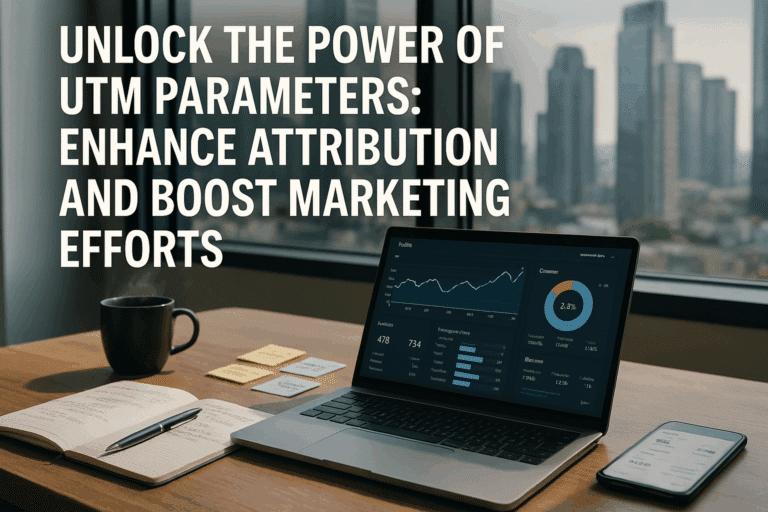And then, it hits you like a bolt from the blue – you’re not entirely certain of the precise impact of each of your advertising efforts. This is where attribution modeling comes into play, and in this blog post, we will delve deep into it, unlocking its secrets for maximum Return on Investment (ROI). 🎯
Attribution modeling is not just a buzzword to toss around at industry gatherings; it is a critical component of any successful digital marketing strategy. As marketers, we often find ourselves trapped in the vortex of data, struggling to assign credit to various touchpoints in a customer’s journey. The question looms large: Which interaction played a pivotal role in converting a potential prospect into a paying customer? 🔍
Attribution modeling in Google Ads is your trusty compass in this confusing labyrinth, guiding you towards the most effective strategies to optimize your ad spend for the maximum ROI. It empowers you to identify which touchpoints in the customer journey deserve the most credit for conversions. And yet, many marketers, despite their vast knowledge and experience, find themselves grappling with the intricacies of attribution models. So, let’s demystify this complex concept, shall we? 🧭
Over the next few thousand words, we will explore the different attribution models available in Google Ads, dissect their pros and cons, and shed light on how to leverage them to ramp up your ROI. But we’re not stopping there; we’re going one step further. You will learn how to customize these models to match your unique business objectives and the ever-evolving customer journey. So buckle up, because you’re about to embark on a comprehensive journey into the world of attribution modeling in Google Ads. 🚀
From Last Click to Data-Driven: A Deep Dive into Google Ads Attribution Models
Google Ads offers a variety of attribution models, each with its unique perspective on assigning credit to interactions. From the popular Last Click model to the advanced Data-Driven model, the choices are plenty. In this section, we will take a closer look at each model, dissecting its mechanics, and evaluating its potential impact on your ad performance. 📊
The Art and Science of Custom Attribution Models
One size doesn’t always fit all, especially in a dynamic environment like digital marketing. With custom attribution models, you have the flexibility to tweak the rules to better align with your business goals. In this part, we will guide you through the process of building custom models, ensuring you maximize the value from every marketing dollar you spend. 💡
Mastering Attribution Modeling for Maximum ROI
Understanding attribution models and knowing how to customize them is just half the battle. The real challenge lies in effectively implementing these models and using the insights to optimize your marketing strategy for maximum ROI. Here, we will delve into some tried-and-tested strategies that will help you transform your Google Ads performance. 🏆
So, are you ready to uncover the secrets of mastering attribution models in Google Ads and catapult your ROI to new heights? Let’s dive in!
🔓 Unlocking the Power of Attribution Models in Google Ads
As the digital marketing landscape continues to evolve, attribution models have become a key tool in deciphering consumer behavior and making data-driven decisions. In Google Ads, these models are essential for optimizing campaign performance and maximizing return on investment (ROI). This article aims to provide an in-depth understanding of Google Ads attribution models, and how to leverage them for your business growth.
💡 Understanding Attribution Models
Before diving into the specifics of Google Ads, let’s take a moment to understand what attribution models are. In essence, an attribution model is a rule or set of rules that determines how credit for conversions is assigned to different touchpoints in a customer’s journey. Depending on the model chosen, the credit can be assigned to a single touchpoint or distributed across multiple touchpoints. Understanding these models is vital in assessing the impact of different marketing strategies and channels on the conversion process.
For instance, if a customer first clicked on a Facebook ad, then a Google search ad, and finally made a purchase after clicking on a retargeting ad, an attribution model helps in deciding which of these touchpoints gets the credit for the conversion. Each model provides a different perspective on the customer journey, thus helping in optimizing marketing efforts.
📊 Attribution Models in Google Ads
Google Ads offers several attribution models, each offering a unique way to distribute credit for conversions. These models include: Last Click, First Click, Linear, Time-Decay, Position-Based, and Data-Driven. By understanding these models and their implications, marketers can make informed decisions on where to allocate their advertising budget for maximum ROI.
| Attribution Model | Description |
|---|---|
| Last Click | Credits the last clicked ad and corresponding keyword |
| First Click | Credits the first clicked ad and corresponding keyword |
| Linear | Distributes credit equally across all clicks on the path |
| Time-Decay | Credits more to clicks that happened closer to the conversion |
| Position-Based | Credits 40% each to first and last clicked ads and corresponding keywords, and the remaining 20% to other clicks on the path |
| Data-Driven | Distributes credit based on past data for this conversion action |
To get a more visual understanding of these models, I recommend watching “Google Ads Attribution: Give Credit Where It’s Due” by Google Ads on YouTube. It provides a comprehensive explanation of the different attribution models available on Google Ads.
🎯 Mastering Attribution Models for Maximum ROI
Now that we have a solid understanding of the different attribution models, the question arises – how can we use these to drive maximum ROI? The answer lies in aligning the attribution model with your business objectives, understanding your customer journey, and continuously testing and refining your approach.
🔬 Aligning with Business Objectives
Each attribution model provides a different perspective on the customer journey. Therefore, choosing the right model depends on what you want to achieve. If your goal is to acquire new customers, the First Click model might be the best fit as it gives credit to the channel that first introduced the customer to your brand. On the other hand, if your goal is to encourage repeat purchases, the Last Click model might be more appropriate as it focuses on the final touchpoint before purchase.
🗺 Understanding the Customer Journey
Understanding the customer journey is a crucial part of choosing the right attribution model. If your customers typically make a purchase decision after interacting with multiple ads, a multi-touch attribution model like Linear, Time-Decay, or Position-Based might be a better fit. On the other hand, if most of your conversions happen after a single interaction, a single-touch model like First Click or Last Click would be appropriate.
🔄 Testing and Refining
Finally, it’s essential to continually test and refine your approach. You can start by choosing an attribution model that aligns with your business objectives and customer journey. However, it’s important to regularly review your results and adjust your model as needed. Google Ads provides detailed reports that can help you understand the performance of your campaigns under different models, thus providing insights for optimization.
💡 Getting Started with Google Ads Attribution Models
If you’re new to Google Ads or have not yet explored attribution models, getting started can feel daunting. However, with a systematic approach, you can quickly learn to navigate these models and harness their potential for your business. Here are some steps to get you started.
🔧 Setting Up Your Conversion Tracking
Before you can start using attribution models, you need to have your conversion tracking set up. This involves adding a piece of code to your website that tracks when a visitor completes a desired action, such as making a purchase or filling out a form. Google Ads offers a comprehensive guide on setting up conversion tracking, which you can find on their Help Center.
🔍 Analyzing Your Current Attribution Model
Once your conversion tracking is set up, it’s time to analyze your current attribution model. This involves looking at your Google Ads reports to understand which model you’re currently using and how it’s impacting your campaign performance. You can then compare this with other models to see if a different approach might yield better results.
🔄 Switching to a New Attribution Model
If you find that a different attribution model might be more beneficial for your campaigns, you can easily switch models in Google Ads. This involves selecting the desired model from the ‘Attribution modeling’ dropdown in your Conversion settings. Keep in mind that changing models will only affect data moving forward, not historical data. Therefore, it’s important to monitor your results closely after making a change.
For a more detailed guide on getting started with Google Ads attribution models, I recommend watching “Mastering Google Ads Attribution for Beginners” by Surfside PPC on YouTube. It provides a step-by-step walkthrough of the process, making it an excellent resource for beginners.
🔎 Final Words
Mastering Google Ads attribution models is a journey, not a destination. It involves continuous learning, testing, and refining. However, with the right understanding and approach, these models can become a powerful tool in your digital marketing arsenal, helping you optimize your campaigns and maximize ROI. So start exploring these models today, and unlock the full potential of your Google Ads campaigns.

Conclusion
In wrapping up our detailed exploration on the intricate nature of software engineering and IT, we come to a close having touched on many salient points that are essential for understanding these complex fields. I hope this has been a journey of discovery and learning for you as it has been for me in writing it. As we have seen, software engineering and IT are dynamic and continually evolving, necessitating continuous learning and adaptability. 💡
We began by delving into the foundations of software engineering and how it is a meticulous process that involves multiple steps, including requirements gathering, design, implementation, testing, and maintenance. Each step has a significant role to play in creating robust and reliable software systems. We saw how crucial a software engineer’s role is in today’s digital age, whether it’s developing new applications, fixing bugs, or making existing software more efficient and effective. 🚀
In the world of IT, we discovered the critical role that technology plays in virtually every aspect of our lives. IT professionals are the backbone of today’s digital world, supporting, maintaining, and improving the systems that we rely on every day. From network administration to cybersecurity, IT professionals ensure the smooth operation of our technological landscape. 🌐
We also explored the importance of continuous learning in these fields. Technology is ever-evolving, and staying up-to-date is vital for any professional in the IT and software engineering industries. Whether it’s learning new programming languages, staying abreast of the latest cybersecurity threats, or understanding emerging technologies like AI and machine learning, continuous learning is a non-negotiable aspect of these fields. 📚
This article’s aim was not just to provide you with information, but to inspire you to delve deeper into these exciting fields. Whether you’re a student considering a career in software engineering or IT, a seasoned professional looking to broaden your knowledge, or simply a curious individual, I hope this article has sparked your curiosity and ignited your passion for learning more.
I encourage you to continue your exploration and expand your understanding. I have provided various links throughout the article that lead to additional resources for further reading. Remember, the learning never stops, and every new piece of knowledge brings you one step closer to becoming a master in your field. 🎓
Finally, I would love to hear from you. Whether you have questions, comments, or wish to share your own experiences and insights, feel free to leave a comment below. Your input not only enriches the discussion, but it also helps others who may be embarking on their own journey of discovery. Let’s keep the conversation going! 💬
I also invite you to share this article with others who may find it useful. Remember, knowledge is power, and sharing it with others is one of the greatest gifts we can give. 🎁
In conclusion, the fields of software engineering and IT are complex, dynamic, and exciting. They offer countless opportunities for growth, learning, and making a real impact in the world. Whether you’re already immersed in these fields or just starting your journey, I hope this article has provided valuable insights and inspired you to continue learning and exploring.
Thank you for joining me on this journey, and until next time, keep exploring, keep learning, and keep pushing the boundaries of what’s possible. 💫
Google is one of the most useful resources for further research, and the Stack Overflow community is an invaluable source of practical advice and solutions.



